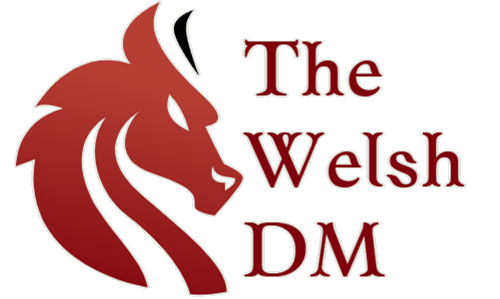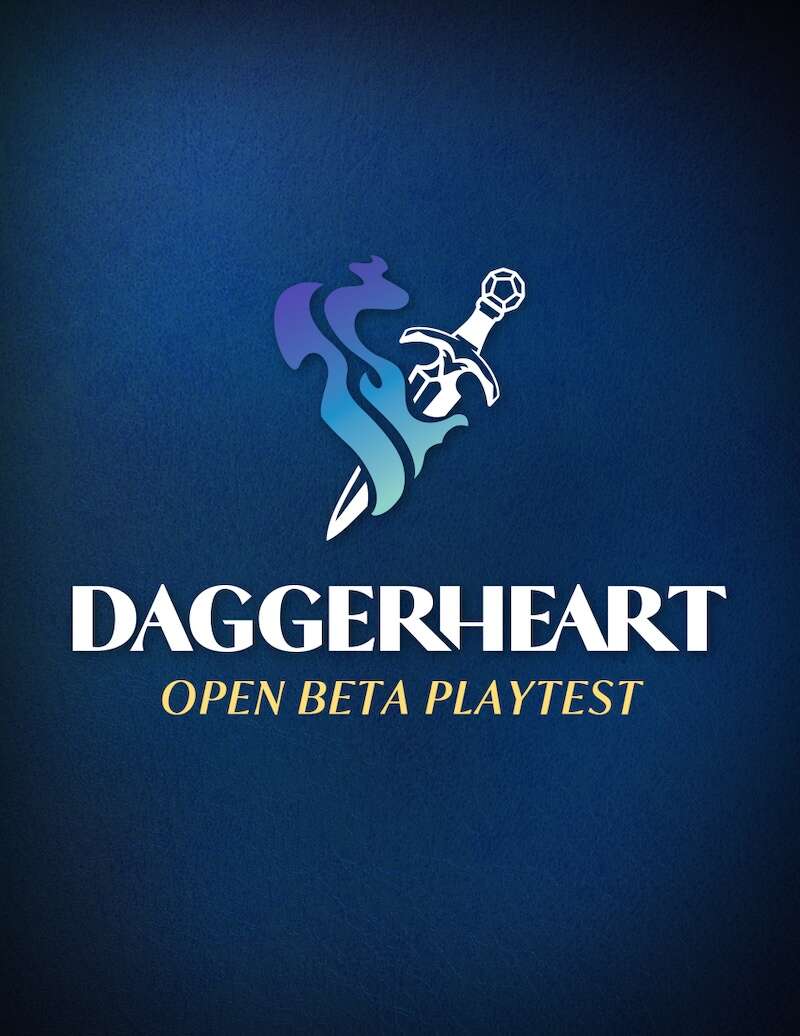
Earlier this week I got the opportunity to playtest Daggerheart – the TTRPG from Darrington Press / Critical Role. It is an innovative system that still has enough of a familiar connection to D&D that made it approachable. At the end of the session, we all very much agreed we’d had fun, but there were a few question marks that crept up.
Obviously, it’s a playtest, we expect there to be issues and rough edges, so this is not a commentary on the final product. Additionally, these are thoughts based on one single play-through with one group – of people I know well. Regardless let’s talk about it and see what gave us some Hope, and what produced a little Fear.
I’d spent a few weeks reading the rulebook and organising a group to play the example adventure that came as part of the Beta and had a few preconceptions heading into the session. But I wanted to ensure I gave the game a fair shot before I made any concrete opinions on it. Some of them were aswaged, some weren’t.
Player Friendly
Off the top, this game is incredibly nice to players. Playing through it, before we got to the final fight, my players had rolled Fear a total of 3 times. Which was great for them, they got to succeed a lot, they felt strong, and they were having fun. The problem arises from the fact that Fear is how the GM is supposed to impose complications into the narrative.
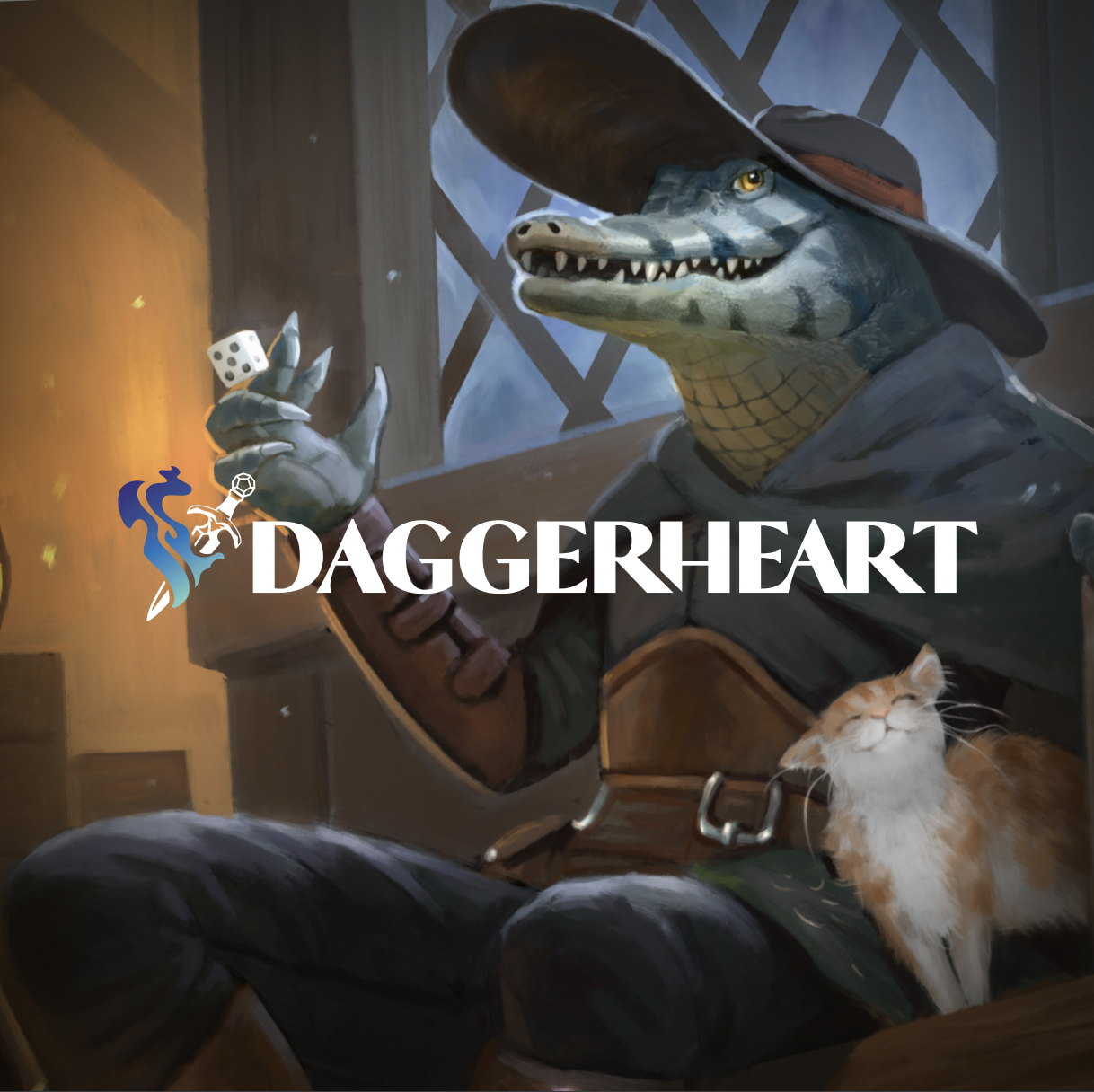
The rules go to great lengths to detail how this is a narrative game (compared to D&D being an action game), and that it’s a back and forth between players and GM. However, it very much felt like the mechanics were leaning towards enabling players to do what they wanted the majority of the time, while the GM sort of goes along with it until a rare moment something “bad” happens. Even then the game wants you to fail forward so something “bad” still invariably works in some capacity.
The basis of this lies in the 2d12 bell curve. The game suggests a Medium difficulty for a check should be 15. With 2d12 the average is 13, applying any modifier, or “Experience” to the roll and you’re immediately on average succeeding; with a high probability of that success. Compared to 5e, while the mean dice roll plus modifiers probably hits just as likely the likelihood of rolling that middle of the field is much less due to not being a bell curve distribution of results.
Daggerheart by design wants the players to succeed. Does this make it a bad game? No, but it makes it a very different kind of game, to what most people would be used to.
Behind the Screen
As the GM, my biggest fear coming in was the amount of load the game seemed to be puting on the GM. Reading through the rulebook it feels like you’ve got to keep track of a lot of things, be prepared for all eventualities, and think of four possible outcomes to a die roll at the drop of a hat, making them narratively engaging as well as rewarding for the player. Coming from a GM who likes to be well-planned before a session this was daunting.
However, in session, it didn’t feel like that at all. Now that may be down to the fact players were succeeding on every non-combat check, so moving the narrative forward and rewarding players was straightforward. But at the end of the day I didn’t come out of the game feeling like I’d been doing all the work.
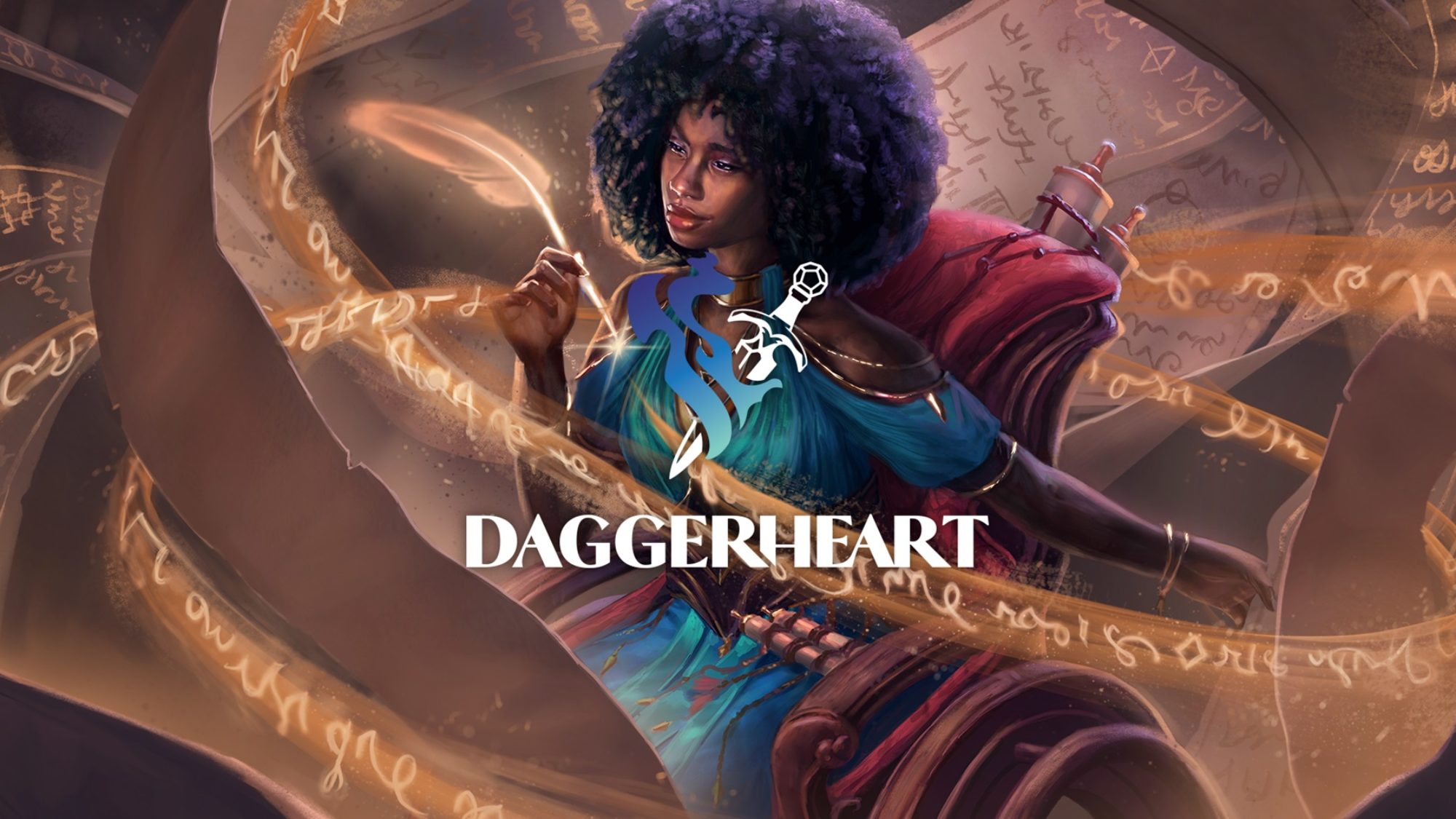
My players put forward their own suggestions, they built little additions into the world as we went, and we all bounced off each other from these. The game was actively encouraging these acts with the favouritism it was showing to player actions too. Yes, this is partially down to a good group, but the game is aiming to be open and flexible, and it does seem to be achieving that.
I’ll be very curious to see how it feels in a less “D&D” esque adventure, running a stealth mission, or a monster hunt could feel quite different, than the classic bandit and ritual adventure provided.
Combat
Despite claiming to be a narrative game, the designers still cling onto D&D’s soul as a combat-centric game by providing us with an entire combat system; unlike other games with a similar “narrative” focus like Powered by the Apocalypse or Blades in the Dark where combat is left to the same evocative system as the rest of the game.
Firstly let’s get the “big” issue out the way. The initiative system. A lot of chat was made online following the game’s release about the initiative system. Straight up. It works. At our table the players were all great in feeling their way through and flowing with things, while still ensuring everyone was getting their chance to act, and also working together by chaining moves and generally building a good narrative.
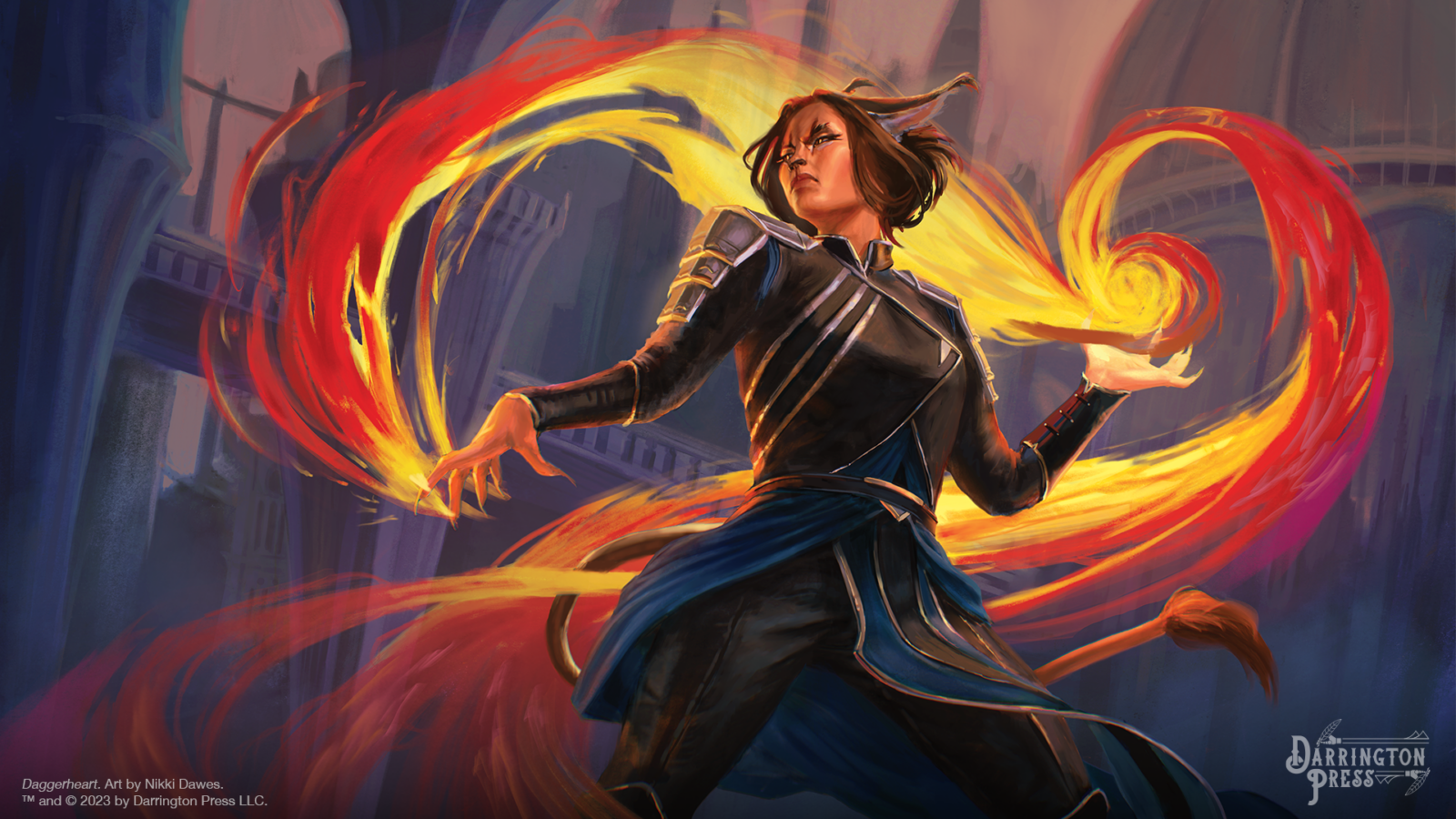
Where it fell down for us, a little, was it didn’t feel like a dramatic back-and-forth cinematic scene, it felt like two people swinging baseball bats at each other. The players would do four or five actions, then the enemies would get a chance, do three or four actions hitting back, and then the players would go again.
I wanted a little more flow to the encounter, a little more narrative opportunity to it where enemies could react to player moments to ramp up the tension and escalate the drama, but then immediately throw it back to the players. It didn’t feel like I expected it to or wanted it to. Maybe that was because I as the GM hadn’t been able to bank up Fear during the roleplay sections – due to my players rolling well – and couldn’t interrupt with small monster counter-actions as we went.
At the end of the day in a game stemming from Critical Role, combats are still going to be the climactic moments in an adventure, and I just want the system to let them be what we all picture in our heads. Right now D&D’s initiative does that punch-counterpunch a little better even if it’s not as narratively fluid.

The other element worth mentioning is that the combat was fast. We’re so used to combat being hours long, with player’s turns taking 5+ minutes as they seek to use their entire turn, being very tactical and methodical. Not the case with Daggerheart, we ran through two combats in one 2-3 hour session, even with having to learn the system.
It felt punchy and quick to handle player’s turns, with the players knowing it wouldn’t be long until their turn came around again they were less likely to try to make every turn be as optimal as possible. Which is great, I love this. Now just need to get it feeling like a dance, not a slugfest.
Armour vs Evasion
The other observation we found from the combat is players are remarkably easy to hit. It felt very brutal from a player’s perspective. I only missed once or twice in combat, and even though a lot of damage got reduced by armour or class abilities, my players still felt like it wasn’t great fun as they didn’t get many cinematic dodges.
This stems from the fact that most characters will have an Evasion score in the 5-10 range. I think the max we had was a 13. Meanwhile, monsters are rolling a d20 plus some modifiers. It becomes quite easy to hit in those situations with monsters.

From a game design perspective, I don’t know if this is strictly a problem though. Evasion is the first of three layers before a monster’s attack is doing direct damage to a PC’s hit points. Evasion then leads to Damage Thresholds, which then can be accounted for via Armour, so through the various layers I don’t think it’s that bad for player survivability. But it definitely is daunting for players who are coming from a system where that first roll “to hit” is so critical to how well you stay alive.
To be clear I’m a big fan of the Damage Threshold system Daggerheart has going on, and think it’s a much more interesting and dramatic way to do damage in a combat RPG. I just think the system needs a little fine-tuning. Our Guardian in the session came out of the game having taken no hit points, just a lot of Stress. Which is fine, but felt odd.
Overall Thoughts
/cdn.vox-cdn.com/uploads/chorus_asset/file/25333914/DH0027_Galapa_Jessica_Nguyen_Expanded_2_1_logo_2048x1024_copy.jpg)
Overall I really enjoyed playing Daggerheart. I think it’s on to a good system, and by the end of playtesting they will probably have an engaging RPG. It was fun to play at the table, it felt loose and free as if the story was ours to tell rather than having “expectations” for what certain people should do in the moment.
What I don’t think it is, is a D&D killer. Largely because I don’t think you will tell the same stories with Daggerheart as you would with D&D. Both will be heroic fantasy but will go about it in very different ways.
D&D is going to continue to exist as the action-combat TTRPG, if you want that feel of tactical combat, and that the dice rolls really matter, I think it’s still king. If however, you want to tell that heroic victory as an oral story, then Daggerheart will let you do it better, and actually encourage you to do it too.
After one game, I think Daggerheart could become my “pick up and play” system. It’s relatively light, players have everything they need, and I’m not worried about dropping out and forgetting rules that much as I would for a D&D, Pathfinder, or Warhammer Fantasy.
I definitely think we’re going to play again, possibly with a heist-like adventure instead. I’m curious to see how character creation goes.
Have you had a chance to roll your Duality dice yet?
What do you think of the new system, has it given you Hope or Fear so far?
Let me know in the comments and share your experience.
